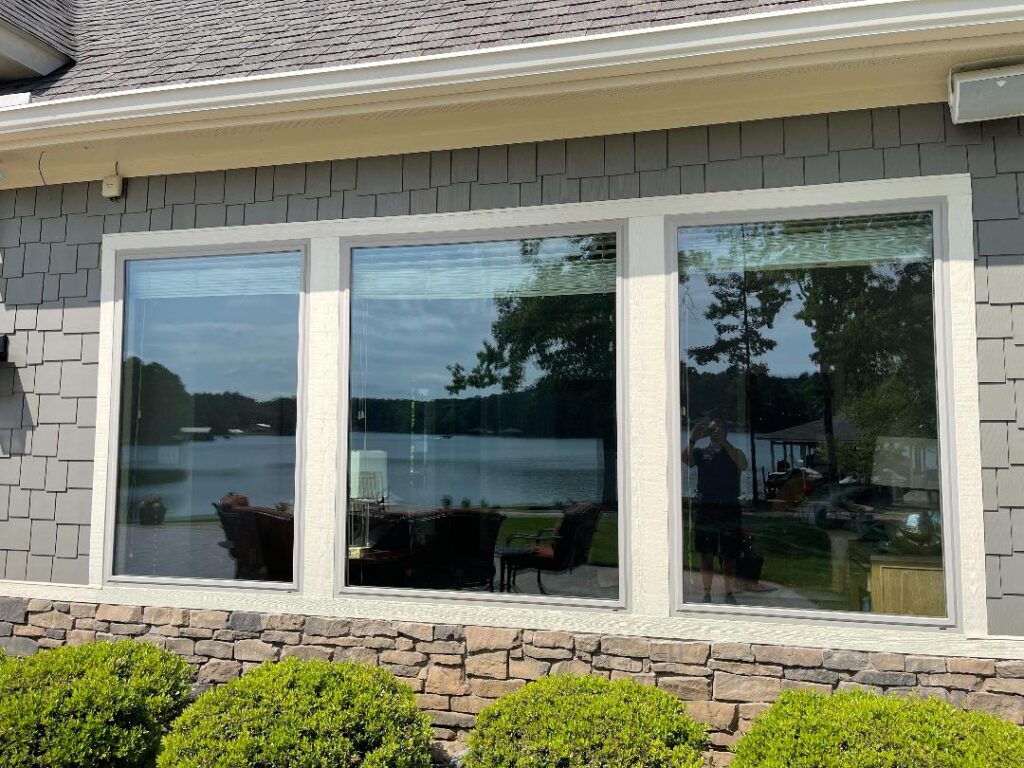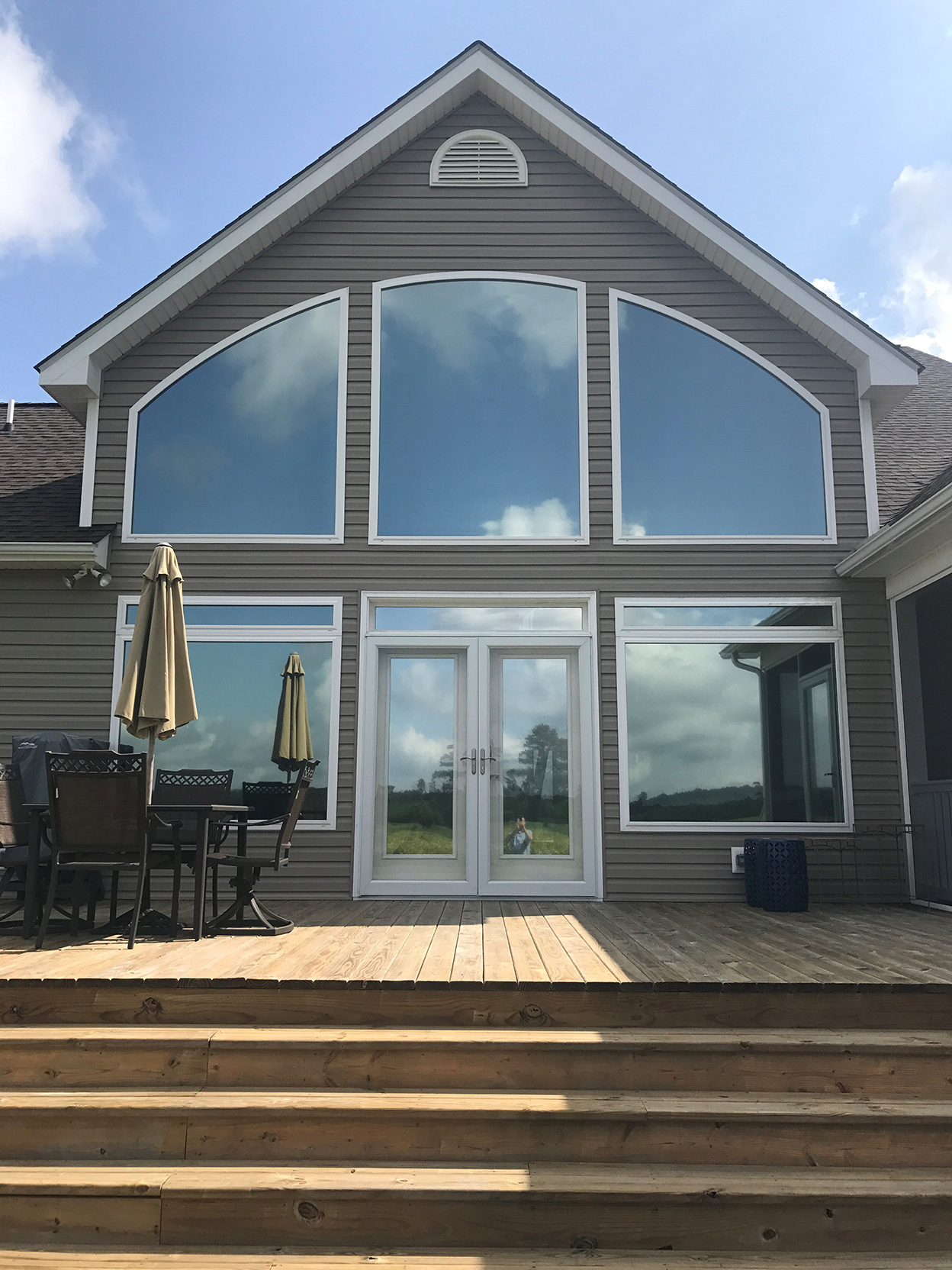Just How Residential Window Tinting Enhances Your Home's Energy Performance
Residential window tinting offers a compelling service for property owners seeking to improve energy effectiveness within their home. By applying specialized movies to windows, it properly decreases heat transfer, therefore stabilizing interior temperatures and lessening the need for extreme home heating or cooling. This not just reduces power consumption yet additionally supplies an extra comfortable setting by reducing glare. Comprehending the subtleties of just how tinting works and picking the suitable kind for your home can be pivotal. Curiously, what factors should one think about prior to making this financial investment?
Recognizing Home Window Tinting
Recognizing home window tinting is necessary for homeowners seeking to enhance both comfort and power effectiveness in their home. Residential Window Tint. Home window tinting entails the application of a thin film to the inside or exterior surface area of glass home windows. This movie can significantly modulate the amount of sunlight and warm that enters a home, thus influencing indoor climate conditions
There are different kinds of window tinting movies offered, each with distinct buildings. The performance of window tinting is frequently gauged by its Visible Light Transmission (VLT) portion, which indicates just how much light can pass via the film.
Advantages of Energy Performance
Window tinting not only improves visual appeals yet likewise plays a substantial duty in boosting energy performance within domestic rooms. By reducing warmth transfer through home windows, colored films develop a much more secure indoor environment, which can lead to considerable reductions in energy intake for cooling and heating. This power efficiency converts into reduced energy bills, supplying property owners with considerable long-lasting financial savings.

Furthermore, window tinting improves the comfort of living rooms. By decreasing glow and blocking hazardous UV rays, colored windows create an even more pleasurable atmosphere, which can lead to boosted wellness for occupants. The defense versus UV rays likewise helps maintain furniture and floor covering from fading, adding to the durability of household products.
How Tinting Functions
Tinting movies operate via a mix of advanced products and technologies made to manage the quantity of solar power getting in a home. Mainly composed of polyester, these films frequently integrate ceramic or metal fragments that show and absorb heat. This dual capacity permits them to substantially decrease the penetration of ultraviolet (UV) rays and infrared radiation while allowing noticeable light to travel through.
The performance of home window tinting is measured by its solar warmth gain coefficient (SHGC), which suggests just how much solar power is transmitted with the home window. Reduced SHGC values are preferable as hop over to these guys they denote better heat being rejected. In addition, window colors can feature a variety of tones, allowing home owners to personalize their aesthetic choices while boosting energy effectiveness.
In addition, these movies function as an obstacle, stopping heat loss during colder months by reflecting indoor heat back right into the home. This thermal insulation effect complements the air conditioning benefits gained during warmer months, adding to a well balanced indoor environment year-round. By managing solar power effectively, residential window tinting not just improves comfort but also plays an important function in reducing power usage and lowering energy costs.
Choosing the Right Color

There are numerous kinds of home window films offered, consisting of dyed, metalized, and ceramic. Ceramic movies give superb heat control without compromising exposure and are extremely durable, making them a prominent selection.
Visible light transmission (VLT) is another important factor, as it shows the amount of all-natural light that can go through the colored glass. Property owners should pick a tint with a VLT that enhances their lighting choices while still offering adequate glare reduction.
Furthermore, evaluating the solar warmth gain coefficient (SHGC) More Info can assist great post to read determine just how well a color can obstruct warm from sunlight. A lower SHGC shows much better warmth control, ultimately boosting power performance.
Setup and Maintenance Tips
Correct setup and upkeep are important components in taking full advantage of the benefits of property home window tinting. Experts additionally use specialized techniques and tools, which can boost the sturdiness and performance of the tint.
Complying with installation, maintenance is necessary to extend the life of the home window movie. It is suggested to wait a minimum of 1 month before cleaning up the colored home windows to allow the adhesive to cure fully. When cleaning, use a soft towel and a gentle, ammonia-free cleaner to avoid damaging the movie. Stay clear of abrasive materials that can damage the surface.
Additionally, normal inspections are advantageous. Look for any type of peeling or bubbling, which might suggest incorrect installation or wear gradually - Residential Window Tint. Dealing with these problems quickly can stop additional damage and maintain energy performance. By sticking to these installment and upkeep ideas, home owners can guarantee their home window tinting remains to supply considerable energy financial savings and convenience for several years to find.
Conclusion
In conclusion, residential home window tinting serves as a reliable remedy for improving energy performance within homes. By minimizing heat transfer and obstructing dangerous UV rays, home window films add to reduce energy usage and improved interior comfort. The choice of suitable tinting products, together with correct setup and upkeep, additionally makes best use of these benefits. Inevitably, window tinting stands for a sustainable financial investment that not only lowers energy bills yet likewise promotes a comfy living environment throughout the year.
Window tinting includes the application of a slim film to the inside or exterior surface of glass windows. By lowering heat transfer with home windows, tinted movies develop a more stable indoor environment, which can lead to substantial decreases in power usage for home heating and air conditioning.The performance of window tinting is measured by its solar warm gain coefficient (SHGC), which suggests exactly how much solar power is sent via the home window. By taking care of solar energy efficiently, property home window tinting not just boosts convenience but also plays a crucial duty in lowering power intake and lowering utility expenses.
By minimizing warm transfer and obstructing unsafe UV rays, home window movies contribute to reduce energy consumption and improved indoor comfort.
Comments on “Why Residential Window Tint is a Smart Investment for Homeowners”